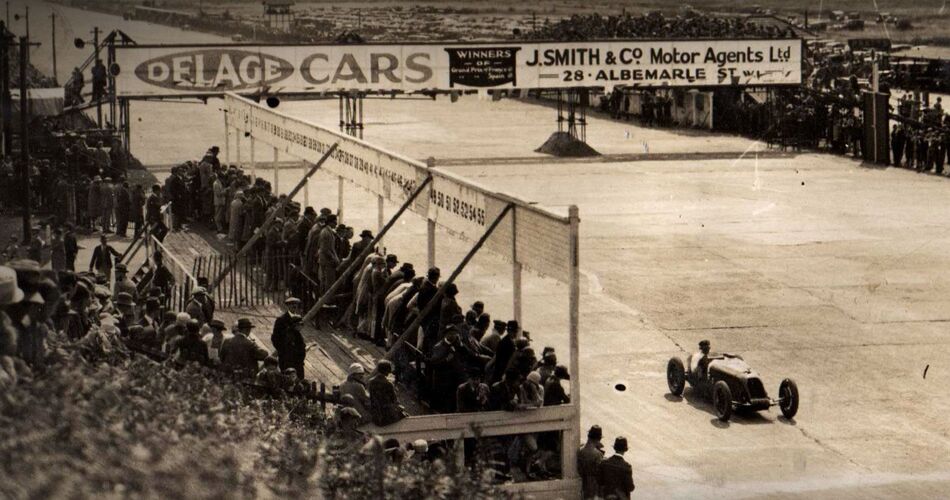Brooklands

Weybridge, England, United Kingdom
About the circuit
In an age where British motorists fell victim to blanket 20 mph speed limits, it would’ve been easy for the country to lag in motorcar development. However, during a European tour, wealthy heir Hugh Locke-King decided that Britain needed its own high-speed testing facility and proposed constructing one in his hamlet-sized estate in Surrey.
Enlisting Royal Automobile Club Chairman Henry Capel Lofft Holden to design, the project soon snowballed into a gargantuan circuit with banked corners up to 100 ft wide and 30 ft high. Expectedly, this project was extortionately expensive, costing Holden some £150,000 (over £15 million today), as well as his health from the stress. His wife, Ethel, took over the project, injecting some of her family’s capital, culminating in her leading a procession of cars on the circuit’s opening on June 17, 1907.
Just days later, Selwyn Edge used Brooklands for a 24-hour record and, illuminated by hundreds of trackside lanterns and the gaze of over 10,000 spectators, covered 1,581 miles at an average speed of just shy of 66 mph. This record would stand for a further seventeen years.
The first official race was held the following month and, as Brooklands was the world’s first purpose-built racing circuit, organised racing was unfamiliar and numerous horse racing practises were followed.
During the First World War, Brooklands was requisitioned by the War Office as a flight training centre, followed by Vickers beginning to manufacture aircraft there, in 1915. Following the armistice, the circuit needed extensive repairs but reopened two years later.
Throughout the 1920s and ‘30s, Brooklands was intensely popular with the aristocratic racing crowd. Names like Count Louis Zborowski, the Bentley Boys and Henry Segrave filled the entry lists, alongside some of the finest cars and motorcycles anywhere in the world.
With the outbreak of conflict in 1939, Brooklands resumed aircraft production once again. This time, facing a threat from enemy bombers, large sections of the circuit were disguised with trees planted directly in the concrete. This, combined with damage from bombing and the solid tyres of heavy army trucks, proved fatal for the circuit.
Following the war, the Brooklands shareholders voted in favour of selling the circuit to Vickers-Armstrongs. Thus, Brooklands remained an aircraft factory until its closure in 1986, when its fate was threatened by British Aerospace’s want to sell 40 acres of the site.
The Brooklands Museum Trust was established in 1987, securing preservation for the few remaining sections of the track. The rest of the site was developed, now containing Mercedes-Benz World and the Brooklands Hotel, amongst others.










